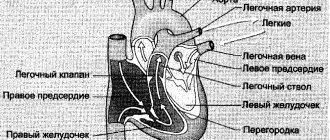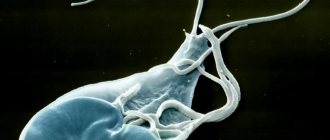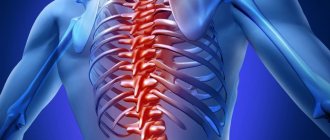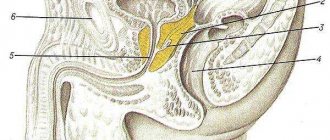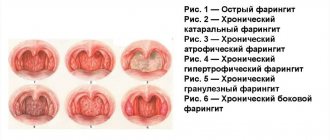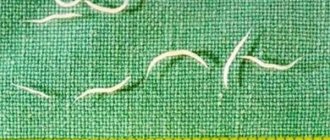Classification of labyrinthitis
There are several ways to classify this disease. Labyrinthitis can be classified according to the type of inflammation, the prevalence of the inflammatory process, the nature of the disease, the mechanism of occurrence and the nature of the infectious agent.
- According to the mechanism of occurrence, it is divided into: Timpathogenic - the infection penetrates into the labyrinth from the middle ear.
- Meningogenic - from the membranes of the brain, most often when the patient has meningitis.
- Hematogenous - the infection enters the labyrinth through the bloodstream.
- Traumatic - labyrinthitis occurs as a complication after a cranial or ear injury.
- Viral.
- specific;
- nonspecific.
- According to the nature of inflammation, labyrinthitis is divided into:
- Serous - pronounced changes in the labyrinths; increased production of endolymph; the appearance of blood cells and fibrin in the endolymph.
- Purulent - spontaneous inflammation; constant formation of granulations; the occurrence of leukocyte infiltration.
- Necrotic - tissue necrosis; disruption of the blood supply to areas of the labyrinth; thrombosis or compression of the artery; artery damage, vascular dysfunction due to edema.
- According to the prevalence of the inflammatory focus, labyrinthitis is divided into:
- Diffuse;
- Limited.
- According to the nature of the disease, labyrinthitis is divided into:
- Acute - inflammation goes away after 2-3 weeks, can be protracted or become chronic;
- Chronic - asymptomatic, gradual increase in symptoms.
Risk factors
Factors that increase the risk of developing labyrinthitis:
- decreased immunity;
- anatomical features of the structure of the ear cavity;
- frequent inflammatory processes in the middle ear.
There are 2 types of labyrinthitis - purulent and non-purulent. The first is a dangerous condition with serious consequences, the second is much easier.
And finally, like many other diseases, inflammatory processes in labyrinthitis can be acute or chronic.
Causes and pathogenesis of labyrinthitis
An inflammatory infection attacking the labyrinth can be caused by several reasons. In each case, internal otitis is caused by the movement of bacteria from the source of inflammation, but the reason why this happens may be different.
The source of inflammation that causes labyrinthitis can be otitis media, which destroys the connective tissue membranes of the ear, and this allows the infection to penetrate the labyrinth, causing suppuration and hearing impairment.
It is also quite likely that infection can penetrate through the cranial cavity, for example due to meningitis or influenza. The cause of such inflammation can be measles, tuberculosis, typhoid, syphilis, herpes, scarlet fever. Here, infection can also penetrate through the blood.
An ear injury, due to which the patient's eardrum was damaged, also causes purulent inflammation and labyrinthitis. This also includes those cases where the injury to the eardrum occurred due to the penetration of a foreign body, manipulation of a sharp object, or traumatic brain injury.
Prevention
Prevention of Labyrinthitis comes down to measures to combat common infectious diseases, as well as timely rational treatment of acute and chronic purulent inflammation of the middle ear.
Bibliography:
Bokhon N. F. Inflammatory diseases of the ear labyrinth and their therapy, L., 1944; Levin L. T. and Tyomkin Ya. S. Surgical diseases of the ear, p. 391, M., 1948, bibliogr.; Minkovsky A. X. Clinical labyrinthology, M., 1974, bibliogr.; Multi-volume guide to otorhinolaryngology, ed. A. G. Likhacheva, vol. 2, p. 270, M., 1960, bibliogr.; Experience of Soviet medicine in the Great Patriotic War of 1941-1945, vol. 8, p. 285, M., 1951; Preobrazhensky B. S. Military-traumatic injuries of the ear, throat and nose, M., 1944; Undritz V.F. et al. Diseases of the ear, nose and throat, p. 150, L., 1969; Zimmerman G. S. Clinical otoneurology, p. 107, M., 1952, bibliogr.; Hart S. W. Vestibular paralysis of sudden onset probably viral etiology, Ann. Otol. (St Louis), v. 74, p. 33, 1965; Hipskind M. M. ao Recurrent meningitis and labyrinthine gusher, related to congenital defect of the labyrinthine capsule and stapes footplate, Laryngoscope (St Louis), v. 86, p. 682, 1976; Palva T., Karja J. a. Palva A. Opening of the labyrinth during chronic ear surgery, Arch. Otolaryng., v. 93, p. 75, 1971; Paparella MM a. Sugiura S. The pathology of suppurative labyrinthitis, Ann. Otol. (St Louis), v. 76, p. 554, 1967; Phelps PD Preservation of hearing in the labyrinth invaded by cholesteatoma, J. Laryng., v. 83, p. 1111, 1969; Ritter FN a. Arbor A. Chronic suppurative otitis media and the pathologic labyrinthine fistula, Laryngoscope (St Louis), v. 80, p. 1025, 1970; Schuknecht HF Pathology of the ear, Cambridge, 1974; SugaF. a. Lindsay JR Labyrinthitis ossificans due to chronic otitis media, Ann. Otol. (St Louis), v. 84, p. 34, 1975; Wullstein HL Pathologie, Klinik und Rontgenbefund der entzundlichen Kno-chenerkrankungen des Innenohres, HNO (Berl.), Bd 15, S. 230, 1967.
I. B. Soldatov.
Symptoms of labyrinthitis
The main spectrum of symptoms of labyrinthitis is related to disturbances in the functioning of the vestibular system, since damage to the labyrinth is fraught with dysfunction of the sense of balance, since this organ is responsible for precisely this ability of the body. Symptoms of this aspect include:
- Severe dizziness that occurs on its own or with body movements. They are systemic in nature, and patients characterize it as a definitely directed rotation of objects or their own body, felt almost constantly. Sometimes it takes on a different character: a person suffering from labyrinthitis may feel unsteady while walking, but cannot predict exactly where he will fall after losing his balance. In other cases, dizziness manifests itself in attacks that last from several minutes to several hours. A strong feeling of dizziness is characterized not only by the above consequences, but also by an increasing feeling of nausea, vomiting, sweating, and facial flushing.
- The occurrence of spontaneous nystagmus. This symptom of labyrinthitis is characterized by a change in direction throughout the entire time.
- Dysfunction of balance coordination, the so-called vestibular ataxia, is a disorder of human movements. It manifests itself in varying degrees, from instability when walking, falling, stumbling and the inability to maintain a straight trajectory of movement, to refusal to move independently. Depending on the position of the patient's head, it may deviate from the normal position in different ways.
- Autonomic disorders. Includes a wide range of symptoms and manifestations, for example, changes in skin color, bradycardia, discomfort in the heart area.
In addition to the above symptoms, labyrinthitis is also characterized by hearing impairment and a constant feeling of tinnitus. These manifestations of the disease occur because the ear receptors that perceive sound begin to die during the course of the disease. Thus, serous labyrinthitis promises recoverable hearing loss, but the purulent type of the disease can seriously damage the ability to perceive sound to the point of complete deafness.
If symptoms of labyrinthitis occur, you must urgently contact an ENT specialist, since not only the consequences of this disease are serious. Labyrinthitis is also insidious because it has many possible complications.
Diagnosis of labyrinthitis
Diagnosis of this disease involves the use of a wide range of ENT procedures, tests, tests and studies. In addition, usually many specialists are involved in making a diagnosis, since labyrinthitis has not only many varieties, but also various complications.
So, the ENT specialist may ask for advice from another specialist, depending on the cause of labyrinthitis. Accordingly, the patient can be examined by a venereologist, otoneurologist, infectious disease specialist, or traumatologist.
The range of ENT manipulations used to diagnose labyrinthitis includes targeted radiography, otoscopy, temporal CT, microotoscopy, magnetic resonance imaging of the brain, and lumbar puncture.
In addition, hearing impairment and its degree are detected using impedance testing, audiometry, promontorial test and other modern medical procedures.
Problems with the patient’s vestibular apparatus are diagnosed using stabilography, fistula test, vestibulometry, and caloric test.
Separately, ELISA and PCR tests are performed to determine the causative agent of the disease; discharge from the ear is also checked for the source of infection.
To make an accurate diagnosis, additional tests are performed that check the patient for other diseases in order to exclude them from the overall picture. Thus, procedures are prescribed to determine otosclerosis, neuritis, cerebellar abscess or Meniere's disease.
Proper nutrition
For a quick recovery of a patient with labyrinthitis, it is necessary to follow a certain diet. During the course of the disease, you need to consume less salt and more natural foods high in minerals. The consumption of any liquids should also be limited to 1 liter per day. You should also give up alcohol and carbonated drinks.
Labyrinthitis, the symptoms of which are the same in adults and children, is a dangerous disease and is fraught with the development of intracranial complications. Inflammation in the ear often requires surgery to prevent brain damage.
Article design: Vladimir the Great
Complications of labyrinthitis
Labyrinthitis is dangerous for the patient due to the possibility of the inflammation spreading to nearby structures of the ear, and transferring infection and suppuration to other organs of hearing or the face.
- The spread of infection to the fallopian canal, which can occur through the inner ear, can lead to inflammation of the facial nerve. This disease is called neuritis of the facial nerve.
- The spread of infection to the mastoid process can cause mastoiditis.
- If the inflammation spreads to the temporal bone, causing the formation of pus, then this qualifies as petrositis.
- A complication of purulent labyrinthitis, the spread of infection into the cranial cavity, can cause a whole range of acute inflammatory diseases, such as brain abscess, meningitis, and encephalitis.
Complications from labyrinthitis are serious diseases that have not only unpleasant, painful symptoms, but also consequences, often irreversible. In addition, infections of the cranial cavity are simply dangerous to health and are considered very complex diseases. Therefore, at the slightest suspicion of labyrinthitis, it is necessary to seek advice, diagnosis and treatment from a doctor, without letting the development of the disease take its course.
When to see a doctor?
You should make an appointment with your doctor if you have:
- Vertigo syndrome;
- fainting;
- slurred speech.
Contact your doctor immediately if you have:
- increased body temperature 38 C;
- convulsions;
- visual double vision;
- severe vomiting;
- paralysis.
It is important to consult a doctor in a timely manner to prescribe therapy. With timely treatment, the disease subsides within a week. In the case of a complicated course of the disease, its manifestations increase and have a pronounced character over 15–20 days. In advanced situations, the auditory nerve receptors are completely destroyed and hearing cannot be restored.
Treatment of labyrinthitis
Since the disease causes a wide range of symptoms, most of which are painful for the individual; affects an important organ; causes many complications, it is not surprising that its treatment is a comprehensive, systemic and complex process, which includes not only taking medications, but also regular examinations and procedures. Surgery is also possible. During the recovery period after an illness, hearing prosthetics is sometimes indicated.
Medicines prescribed for labyrinthitis are anti-inflammatory drugs, antibiotics, drugs to increase blood circulation, and neuroprotectors. Symptoms of the disease are relieved by ballataminal and betahistine, vestibulolytics.
Surgical intervention can be aimed at sanitation of the middle ear, plastic surgery of the labyrinth fistula, opening of the temporal skin pyramid, or even complete removal of the labyrinth with drainage of the cranial cavity.
Recovery after surgery may involve the need to install a hearing prosthesis to maintain the patient's current state of health and prevent deterioration in the ability to perceive sounds. To do this, either cochlear implantation is performed - an invasive manipulation that restores hearing. Or prosthetics are shown, and the selection and adjustment of the device is carried out by a hearing care specialist.
Prognosis for labyrinthitis
Depending on the type of disease and the nature of its course, different prognoses are formed for the possibility of hearing restoration. In the case of acute serous labyrinthitis, a complete restoration of the ability to perceive sounds and a return to a state of full health are predicted.
The presence of purulent labyrinthitis causes less comforting prognoses. Usually, a doctor can predict hearing impairments and the presence of individual problems in the functioning of the vestibular apparatus. The situation may be better if the patient’s body adapts after recovery and the body independently establishes balance in the equilibrium mechanism, transferring some functions to the healthy ear.
If the damage was severe, and the disease acquired complications or severe forms of progression, then the dysfunction of the diseased ear will not disappear after recovery. Hearing loss is predicted on the side where labyrinthitis was suffered.
In order to avoid a difficult recovery period, the prospect of hearing prosthetics or rehabilitation after an illness, it is recommended to consult a doctor at the first problems with hearing, the vestibular system and well-being in general. Problems in the ENT spectrum are characterized by a wide range of complications and unpleasant course, therefore, in order to protect yourself from possible consequences, you must immediately consult a specialist, fulfilling all the requirements of the doctor and his instructions.
Kinds
In medicine, there are several types of this disease.
The classification is based on different criteria:
| View | Explanation |
| Spicy | This form is more common than others. It appears suddenly, but with proper therapy it does not last more than 2 weeks. |
| Chronic | There are no obvious signs, but this does not mean that treatment is not necessary. Inflammation can progress to an acute stage. |
| Limited | Formed in individual components of the inner ear. |
| Common | Captures all elements of the bone labyrinth. There is even bilateral otitis media, in which pathology appears in both hearing organs. |

